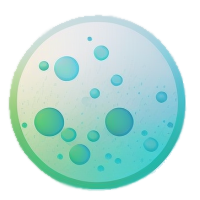Marine Algae is a fragrance note that captures the essence of the ocean, evoking the fresh, salty, and slightly green aroma associated with sea environments. Derived primarily from synthetic compounds, Marine Algae aims to replicate the natural scent of oceanic flora, offering a crisp and invigorating touch to perfumes. Historically, the use of marine-inspired notes in perfumery emerged in the late 20th century, as perfumers sought to create scents that convey a sense of freshness and vitality reminiscent of coastal breezes. Marine Algae adds depth and complexity to fragrances, often enhancing aquatic and fresh fragrance families by providing a realistic sea-like ambiance. It contributes to a modern and clean scent profile, making it a popular choice in contemporary perfumery for evoking a connection to nature and the sea.
Natural or Synthetic?
Marine Algae is primarily used in its synthetic form because replicating the complex and subtle scents of marine environments from natural sources is challenging and not economically feasible. Synthetic production allows for consistency, scalability, and the ability to fine-tune the aroma to achieve the desired marine effect. The natural extraction of scent from marine algae would require large quantities of biomass and advanced extraction techniques, making it expensive and impractical for widespread use in perfumery. Additionally, the exact marine scent involves a blend of volatile compounds that are more effectively synthesized in laboratories to mimic the fresh and salty notes characteristic of oceanic fragrances.
Fragrance Families Marine Algae Most Commonly Found In
Show fragrances that contain Marine Algae as a note



